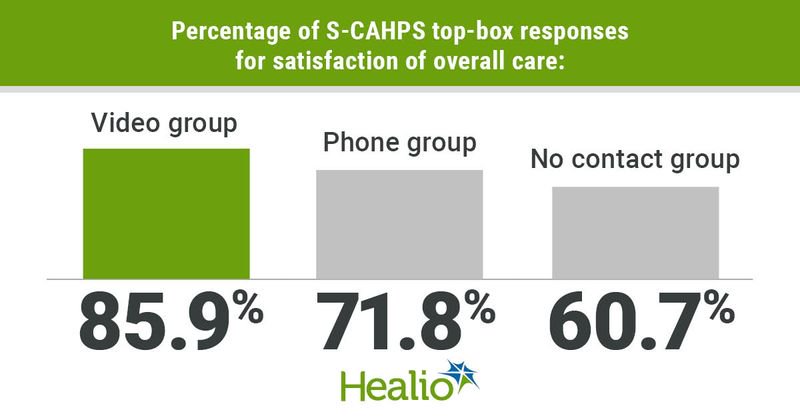Day-of-surgery interactions can enhance patient satisfaction
Click Here to Manage Email Alerts
Results showed phone and video calls by surgeons to patients the day of orthopedic surgery may enhance patient satisfaction with the clinical care experience, with video calls providing superior results in satisfaction with overall care.
Matthew T. Kingery, MD, of the department of orthopedics at NYU Langone Health, and colleagues randomly assigned three surgeons who provided outpatient orthopedic surgery to 251 patients to one of three patient communication modalities, including no contact (n=61), phone call (n=119) or video call (n=71). The surgeons contacted patients according to their assigned treatment group several hours following discharge on the day of surgery, according to researchers. Researchers used the Consumer Assessment of Healthcare Providers and Systems Surgical Care (S-CAHPS) survey and an additional satisfaction questionnaire to assess satisfaction outcomes at the initial postoperative visit.

Results showed the video group and phone group had greater S-CAHPS top-box response rates vs. the no contact group. Researchers found 85.9% of patients in the video group gave the top-box response when asked to rate satisfaction with overall care compared with 71.8% of patients in the phone group and 60.7% of patients in the no contact group. In future encounters with their surgeon, 62% of patients in the video group reported preferring a video call vs. 1.8% of patients in the no contact group and 1.7% of patients in the phone group, according to results.
Following the investigation, Kingery noted patients said receiving a video call from their surgeon following surgery “demonstrated the high level of care and interest that the surgeon has in their patient’s recovery process,” which has become an area of concern in the health care landscape.
“Finding novel ways to maximize patient satisfaction is becoming increasingly important as reimbursement becomes closely tied with measures of patient satisfaction, like the [Hospital Consumer Assessment of Health care Providers and Systems] HCAHPS survey,” Kingery told Healio Orthopedics. “More importantly, because many encounters between patient and surgeon in busy orthopedic surgery practices tend to be fairly brief, it is critical that patients feel that they are receiving sufficient face time with their surgeon.”



